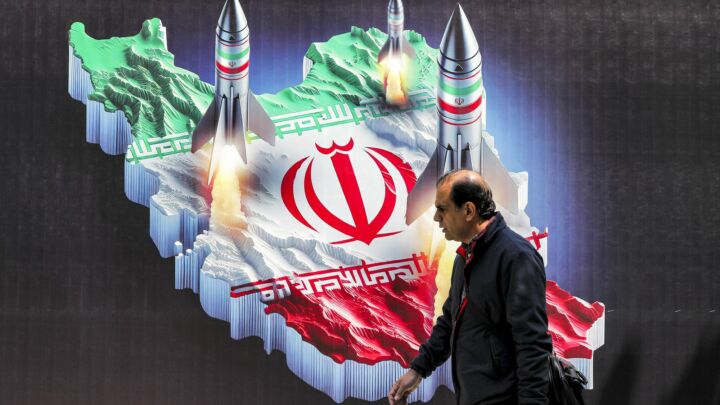The war on terror: a nasty, panicky failure
Jane Mayer provides a biting critique of the ham-fisted reaction to 9/11. But an effective opposition to the war on terror needs to criticise every aspect of Bush’s policy, not only the most unsavoury ones.

Now that America has elected Barack Obama to be its next president, thoughts turn to the legacy of George W Bush. Arguably, his tenure in the White House will be marked by two bookends: the 9/11 attacks during his first year and the economic crisis in his remaining months. Most prominent in between these two signposts have been the major initiatives the Bush administration launched ostensibly in response to 11 September, namely the so-called ‘war on terror’ and the invasion of Iraq.
And to help us undertake a reckoning of the ‘war on terror’ that Obama inherits from Bush, we are fortunate to have Jane Mayer’s engaging new book, The Dark Side. Mayer, a writer for the New Yorker, examines the consequences of the Bush regime’s pursuit of Islamic terrorists around the world, with a focus on the treatment of those it captured and detained. An investigative reporter, Mayer digs up new information and, even more usefully, weaves together the different strands that have emerged now and again over the past seven years or so into a coherent narrative.
New terms have entered our vocabulary thanks to the Bush administration’s anti-terrorist tactics: ‘rendition’ (transporting suspects to non-US locations), ‘black sites’ (CIA prisons outside the US), ‘Camp X-Ray’ (a prison in Guantanamo Bay, which is technically in Cuba but under US control), and ‘Abu Ghraib’ (the Iraq prison where the US military staff abused detainees and took photos to prove it). All of these are explored and explained in Mayer’s book; in fact, one of the best aspects of the book is how she is able to show how these events inter-relate. For example, Mayer notes how techniques used against Abu Ghraib prisoners were the same ones used in Guantanamo and elsewhere, which leads her to uncover links between the two (such as Major General Geoffrey Miller) and ultimately tie the abuse back to official policy and top decision-makers, rather than just, in Bush’s words, ‘a few bad apples’.
Mayer’s main thesis is that, after 9/11, a White House ‘war council’, consisting most notably of Vice-President Dick Cheney and legal advisers David Addington and John Yoo, devised new legal rationales for a significant increase in government powers – especially presidential powers – to carry out the war on terror. These new powers sanctioned practices such as secret capture, indefinite detention of suspects without charges, and ‘enhanced interrogation tactics’ like ‘waterboarding’, otherwise known as torture.
Mayer writes: ‘Simply by designating the suspects “enemy combatants”, the president could suspend the ancient writ of habeas corpus that guarantees a person the right to challenge his imprisonment in front of a fair and independent authority. Once in US custody, the president’s lawyers said, these suspects could be held incommunicado, hidden from their families and international monitors such as the Red Cross, and subjected to unending abuse, so long as it didn’t meet the lawyers’ own definition of torture. And they could be held for the duration of the war against terrorism, a struggle in which victory had never been clearly defined.’
Moreover, the Bush administration did not go to Congress for authority to undertake its approach; in fact, much of the strategy was, and remains, secret from Congress and the public. Rather than seek a political mandate, the White House cited that the country was at war and hid behind legal manoeuvres.
A ‘war’ born of fear and weakness
Mayer usefully situates the origins of this new type of war in the deeply nervous atmosphere in Washington in the days immediately after 9/11. The Bush administration’s response, she argues, was motivated by panic and fear about a second wave of attacks, which was ‘the only certainty shared by the entire American intelligence community in the fall of 2001′.
This emphasis on the fear and uncertainty underlying the Bush administration’s initial reaction is important because it goes against conventional wisdom. The war on terror is often portrayed as a pure power grab by Bush and Cheney. The image is of a strong, confident clique grabbing even more power and shredding the constitution in the process (in some accounts, it is on the road to fascist dictatorship). But in fact, the Bush response, including the invention of the ‘war on terror’ itself, was born of defensiveness, a need to try to restore authority from a perceived position of weakness (and, as the ‘war on terror’ fizzled, it became clear they would never be able to attain that authority).
Rather than soberly assess the post-9/11 situation, a consensus quickly took hold among elites that 9/11 ‘changed everything’. But if everything changed, then everything was uncertain. Significantly, Bush declared that the attacks represented a ‘war’ and thus they were not to be treated like other acts of terror in the past. In other words, there were no lessons that could be learned from the past and the regime was left without a compass. Specifically, that meant that what could have been considered a criminal investigation was turned into a much broader military operation, with unforeseen consequences.
This war was easier to declare than to define. From the start, there has been a lack of clarity about its purpose (1). Unlike other wars, the enemy was not a state, so who exactly is the enemy? And what motivates them? What are the US’s objectives? What is being defended – buildings, lives, the way of life, democratic institutions; all of the above? What is success: does a terrorist bomb going off in the US ‘homeland’ signify a defeat, and does the lack of any such bomb on its own define success? ‘War on terror’ was more of a slogan in search of a mission than a plan of action.
Devoid of a clearly defined purpose, and not inclined to discuss longer-term strategy because ‘something must be done’ and done urgently, the Bush administration fell back on a basic, strong desire to pre-empt future attacks. For instance, after 9/11, Bush angrily warned Attorney General John Ashcroft: ‘Don’t ever let this happen again.’ Mayer writes that Ashcroft interpreted this as ‘an order to get more aggressive, more pre-emptive and pro-active’. The gloves would come off.
The pre-emptive stance – which was a futile attempt to eliminate risks – had implications for how the anti-terrorist campaign was waged and gave it some irrationality. It provided a justification for widening presidential powers – for example, a secret legal memo issued later in September 2001 declared that ‘it was the president’s prerogative to take whatever military action he deemed necessary, including pre-emptive action, not just in response to the 11 September attacks, but also prevention of any future attacks from terrorist groups’. But it also meant that, instead of solving crimes that had occurred, the primary aim was to identify and prevent future crimes. The pre-emptive approach supported tactics like rendition, as a means of, as Mayer writes, ‘disrupting and punishing suspects before they were provably guilty’.
Rounding up suspects for ‘crimes’ that are assumed will happen in the future, but have not yet in actuality, and potential informants who might know of such future crimes, would inevitably lead to many innocent people being detained. And that, in fact, is what happened. A CIA expert found that at least one third of the Guantanamo prisoners were innocent. Not one terrorist suspect from outside the US criminal court system has yet been tried. Of the total of 759 detainees held in Guantanamo, approximately 270 remain, only a few of whom have been charged.
Chaotic, yet dangerous
In Mayer’s account, the American combatants in this war on terror are shown to be often puffed-up blowhards, amateurish and in disarray. She tells of how Cofer Black, head of the CIA’s Counter-Terrorist Center, when warned by Russians that Afghanistan is geopolitical quicksand, replied: ‘We’re going to kill them. We’re going to put their heads on sticks. We’re going to rock their world.’ Black is not the only one who uses language usually found only in Hollywood movies. Guantanamo interrogators would watch the TV show 24 to pick up ideas on how to overcome resistance and torture (because the hero, Jack Bauer, could always get his enemies to talk).
The Bush anti-terror strategy placed the CIA in a central role, but as Mayer describes, the CIA had little experience of operating prisons and interrogating prisoners. So they turned to an outside contractor, James Mitchell, to lead the CIA’s team interrogating a terrorist suspect, Abu Zubayda. But, as it happens, Mitchell had never been an interrogator before – he was an instructor to American military personnel to resist torture, and he was effectively ‘reverse engineering’ that programme. Furthermore, Mayer writes: ‘Oddly, given the agency’s own dearth of experience in the area of interrogating Islamic extremists, he had no background in the Middle East or Islamic terrorism. He spoke no Arabic and he knew next to nothing about the Muslim religion.’
The point is not that the US military/intelligence apparatus has just become less professional over time. It is that the lack of purpose and mission coming from the top leads to a lack of cohesion throughout the various organisations. And while it was predictable that, immediately after being hit on 9/11, leaders of the US government would express anger and seek some form of retaliation, it is disastrous for military discipline for them to not control those emotions and let them become an organising principle, effectively sending a signal that individuals are free to inflict their own revenge.
Bush has claimed that ‘alternative’ interrogation techniques used (which he does not consider to be torture) have been successful, and that useful information has been obtained that way, in particular with respect to the al-Qaeda member Abu Zubayda. It seems likely that something of value to the authorities would result from such methods; the question is how much? Mayer challenges the claims of Bush and others pretty convincingly with respect to the Zubayda case and more generally. More often than not, she finds that detainees gave false information: Zubayda, for instance, reportedly told of ‘entirely imaginary plots to blow up American banks, supermarkets, malls, the Statue of Liberty, the Golden Gate Bridge, the Brooklyn Bridge, and nuclear power plants’. Many man-hours were spent following up these false leads.
Even if ineffective, these torture tactics could end up having dangerous consequences beyond the individual on the receiving end. In many situations, interrogators let on what they wanted to hear and prisoners eventually gave them that, even though it wasn’t true, for fear of dying under torture. In the months prior to the US invasion of Iraq, the CIA handed al-Qaeda commander Ibn al-Shaykh al-Libi over to Egyptian security and he was pressed to admit knowing ties between al-Qaeda and Saddam Hussein. This was then used by the Bush administration to bolster the case for war – and we know how bloody that has turned out to be.
Limits to a focus on excess
Mayer provides a useful exposé of barbaric interrogation practices and government secrecy. Camp X-Ray is a disgrace; it should be shut down and its prisoners should be set free immediately. Torture should stop. Presidential power usurped by the Bush White House should be repealed and balance with Congress restored.
However, there are limits to Mayer’s approach, which focuses mainly on the excesses of the war on terror, like torture. Guantanamo has become an easy target now, a one-word way express moral posturing (2). Outside the US, it has been used by some to claim that American imperialism is uniquely pernicious. And there is something downright perverse about some liberals’ fascination with the particulars of the most hideous torture methods (while often ignoring the fighting going on in Iraq and Afghanistan).
Indeed, for many, it became fashionable to bash the American torturers only after it was clear that the Iraq war and the war on terror were backfiring. US and other Western leaders pumped up the threat of Islamic terrorism, claiming that it necessitates extraordinary measures and curtails of liberties. And early on, many people bought it: there was much support for these policies; nearly all Congress members backed them and there was also support in society generally. At that time, many did not want to dwell on the anti-terror tactics; the mainstream media was not reporting much on it (3).
The ‘war on terror’ is more than torture; it is a broader approach to anti-terrorism adopted by the US, the UK and the other major Western countries. The only consistent and broad form of opposition is to be against not just torture, but the entire war on terror, including the Iraq and Afghanistan wars. Proponents of war might call for a ‘clean’ or ‘fair’ war, but there is no such thing: if you support war, you have to bear responsibility for what that entails and any war will inevitably bring atrocities.
These points become more relevant as the Obama inauguration nears. Obama has stated, most recently in his interview with the CBS current affairs show 60 Minutes, that he will ban US agencies from using torture methods. His appointee for attorney general, Eric Holder, is also on the record as opposing torture. Some radicals are hoping that Bush and Cheney are prosecuted as war criminals, but that seems unlikely. As Mayer points out, ‘key members of congress sanctioned this programme, so many of those who might ordinarily be counted on to lead the charge are themselves compromised’ (4).
But while Obama is likely to roll back some of the Bush measures, and try to distance himself from Bush and his unpopular war on terror, he is just as committed as Bush to continuing the war on terror in its essentials. As Obama said in his party nomination acceptance speech in August, he opposed the Iraq war ‘knowing that it would distract us from the real threats we face’. He went on to say: ‘When John McCain said we could just “muddle through” in Afghanistan, I argued for more resources and more troops to finish the fight against the terrorists who actually attacked us on 9/11, and made clear that we must take out Osama bin Laden and his lieutenants if we have them in our sights.’ He even taunted his opponent. ‘John McCain likes to say that he’ll follow bin Laden to the Gates of Hell – but he won’t even go to the cave where he lives’, Obama said, implying that he would go there.
Eliminating excesses like torture would be positive – both in its own right and because it would highlight that everything about the war on terror is wrong, not just its most obviously inhumane features.
Sean Collins is a writer based in New York.
The Dark Side, by Jane Mayer, is published by Doubleday. (Buy this book from Amazon(UK).)
(1) See Frank Furedi, Invitation to Terror, 2007
(2) Guantanamo Bay and the champagne anti-imperialists, by Brendan O’Neill
(3) Eric Umansky, ‘Failures of Imagination’, Columbia Journalism Review, September/October 2006
(4) Scott Horton, Six questions for Jane Mayer, Author of The Dark Side, Harper’s, 14 July 2008
To enquire about republishing spiked’s content, a right to reply or to request a correction, please contact the managing editor, Viv Regan.








Comments
Want to join the conversation?
Only spiked supporters and patrons, who donate regularly to us, can comment on our articles.